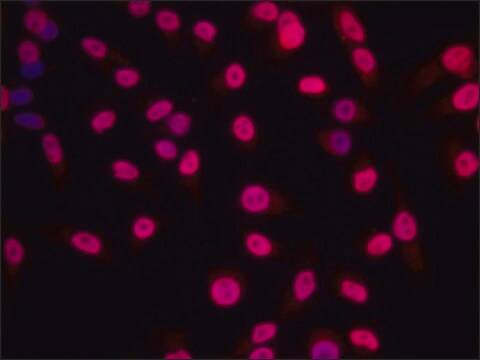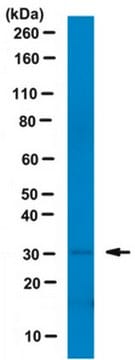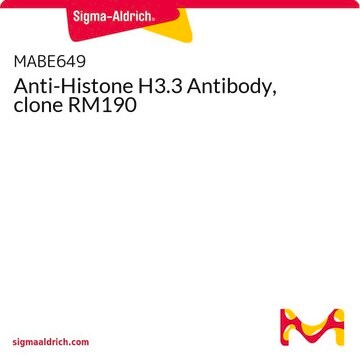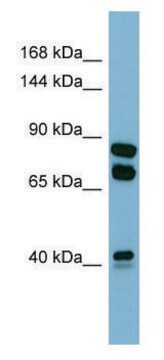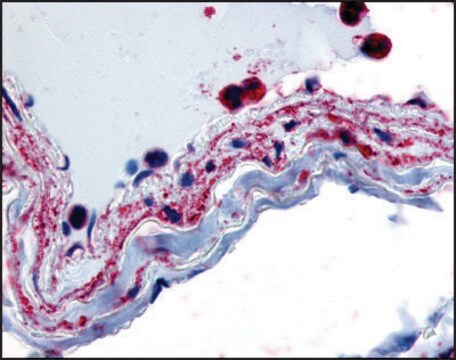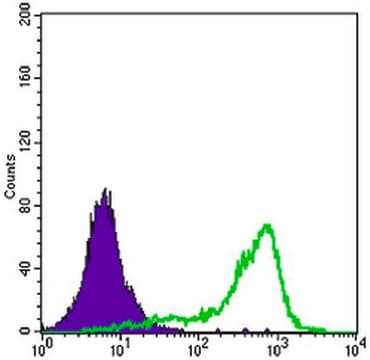MABE1885
Anti-Histone H1 Antibody, clone 1G6
clone 1G6, from mouse
Sinónimos:
H1
About This Item
Productos recomendados
origen biológico
mouse
forma del anticuerpo
purified immunoglobulin
tipo de anticuerpo
primary antibodies
clon
1G6, monoclonal
reactividad de especies
Drosophila
envase
antibody small pack of 25 μg
técnicas
ChIP: suitable (ChIP-seq)
immunoprecipitation (IP): suitable
western blot: suitable
isotipo
IgG1κ
Nº de acceso NCBI
Nº de acceso UniProt
modificación del objetivo postraduccional
unmodified
Descripción general
Especificidad
Inmunógeno
Aplicación
Immunoprecipitation Analysis: A representative lot immunoprecipitated Histone H1 in Immunoprecipitation applications (Iwasaki, Y.W., et. al. (2016). Mol Cell. 63(3):408-19).
Chromatin Immunoprecipitation Analysis (ChIP): A representative lot immunoprecipitated Histone H1 in Chromatin Immunoprecipitation applications (Iwasaki, Y.W., et. al. (2016). Mol Cell. 63(3):408-19).
Calidad
Western Blotting Analysis: A 1:500 dilution of this antibody detected Histone H1 in Drosophila S2 cell lysate.
Descripción de destino
Forma física
Otras notas
Not finding the right product?
Try our Herramienta de selección de productos.
Certificados de análisis (COA)
Busque Certificados de análisis (COA) introduciendo el número de lote del producto. Los números de lote se encuentran en la etiqueta del producto después de las palabras «Lot» o «Batch»
¿Ya tiene este producto?
Encuentre la documentación para los productos que ha comprado recientemente en la Biblioteca de documentos.
Nuestro equipo de científicos tiene experiencia en todas las áreas de investigación: Ciencias de la vida, Ciencia de los materiales, Síntesis química, Cromatografía, Analítica y muchas otras.
Póngase en contacto con el Servicio técnico
